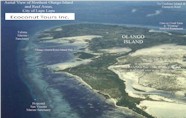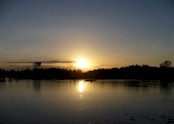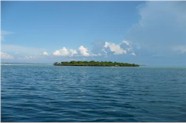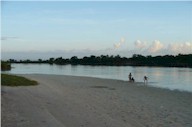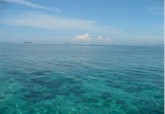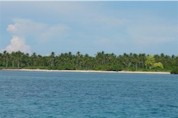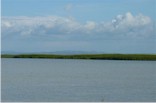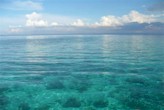|
1.
The
Philippines.
1.1 - The geography of the Philippines.
Located in the most western part of the Pacific Ocean, the Philippines
form a mountainous archipelago, which belongs to a vast volcanic chain
extending from Indonesia to Japan. From North to the South, its 7107
islands are scattered in an area of 1840 square kilometers and benefit
from a tropical climate. The two principal islands, Luzon and Mindanao,
account for 65% of the surface area and have more than 60% of the
population, which totaled 84.2 million inhabitants in 2005. The total
surface area of the archipelago (298 000 square km) is slightly higher
than half of France, but the length of its coasts (35 000 km) is on the
other hand twice as important as the coastline of the United States.
1.2 - The Filipinos.
The Filipinos, mainly of Malayan or Polynesian origin, are a people of
many mixed marriages, a consequence of the Spanish and Chinese
presence. Very often, the traveler who visits the Philippines will
discover the feeling of being in a very different area of the world. In
many aspects, the archipelago of the 7107 islands will evoke the
Caribbean or certain areas of South America. Among the 84.2 million
Filipinos, 93% are catholic. So it is overwhelmingly the most catholic
country of Southeast Asia. The national language, Tagalog, has become
dominant although English is still used overall in the field of
education, in trade and in communication. The Philippines constitute
the third largest anglophone country in the world. But, 55 regional
languages and 142 dialects are also spoken in the country. Philippines
constitute a single nation representing the crossroads of four cultural
heritages: Asian, European, Mexican and American. No other nation in
the world can claim to have a mixture as varied and as extended through
four cultures. Thus, it is not rare for the Filipinos to have a Spanish
name, to speak English with an American accent, to have a Latin
temperament, while having typically Asian physical characteristics.
1.3 - A rich and varied culture resulting from 4
centuries of a colonial past
It was in 1521 that the Spanish discovered the Philippines. They were
confronted with a multitude of small decentralized sultanates and
kingdoms. The social organization mainly founded on small autonomous
communities, were isolated, which facilitated colonization. But this
tendency became effective only after the expedition of Legazpi, in
1565, attracted to the area in a search of pepper. In spite of the
effort of unification, regional differences remained and survived even
under the domination of the Spanish Empire as well as under the
American hegemony which followed. The colonization, familiarly
described by the expression “400 years of Religion, 50 years of
Hollywood”, has certainly left traces, but according to
anthropologists, the result remains deeply Filipino. This is one of the
paradoxes of the Philippines where the mixture of the cultures is one
of the authentic features of the Filipino people
2.
The Archipelago of Visayas.
The
Filipino territory is divided into 3 groups of islands: Luzon, Visayas,
and Mindanao. Borded by Palawan in the West and Mindoro in the South,
the Archipelago of Visayas is composed of six large islands, Panay,
Negros, Cebu, Bohol, Samar and Leyte, and of a multitude of small
islands, separated by a maze of ocean spaces composed of various
straits, bays and gulfs. Visayas forms the second most popular tourist
area of the Philippines. Moreover, a great number of historical events
of the Philippines occurred in the Visayas. Magellan disembarked on the
coast of Cebu in 1521, giving the Philippines its first contact with
Europeans. As he promised, General MacArthur returned to the
Philippines during the second world war, landing close to Tacloban, on
the island of Leyte.
3.
The province of Cebu.
The
Visayas islands are divided into 4 areas: Cebu Province, Central
Visayas, Visayas Western, Eastern Visayas. Capital of the province, the
town of Cebu (or Cebu City) is the second most important city of
the
archipelago in respect to economic activity. Indeed, the majority of
the companies in the shipbuilding industry in the Philippines has
established their head offices in Cebu City. Thus, the docks of Cebu
City receive more cargo ships and passenger liners than the docks of
Manila. This is the part of the country where virgin islands and
paradisiacal beaches come to mind. Indeed, the beaches are of white
sand, have coconut trees and sparkle of turquoise water… Adding to this
dream are mangrove trees and enormous wide coral reefs, which really
makes of this area a paradise for tourism.
Home
Page
|


